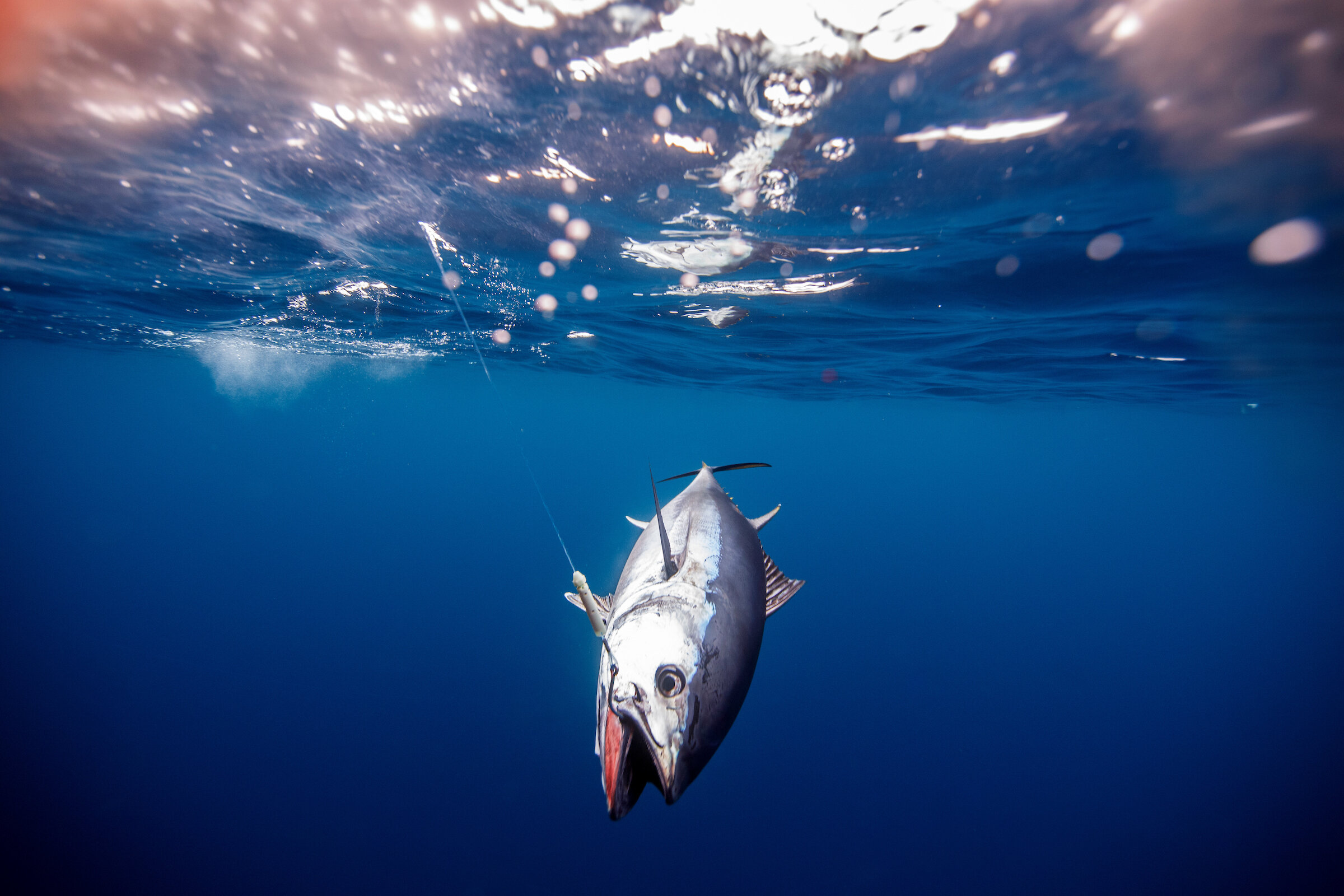Bluefin are slowly recovering—should we kill more of them?
Southern bluefin have been one of the great success stories of fisheries management. First, we fished them down to just 13% of their original biomass. Then in 1994, New Zealand, Australia and Japan got together and made a plan to recover the fishery to 30% by 2035. Korea, Indonesia and Taiwan have joined since.
Today, this torpedo of a fish is sitting at 20% of its unfished population. That small gain is a huge victory for fisheries management, but still south of the 30% goal, and a long way off the 50% target that scientists (and Legasea) label as sustainable and ‘maximum yield’ from a fisheries point of view.
Tuna are magnificent, long-lived fish—delicious to eat and a thrill to fish. But it’s worth pointing out that southern bluefin are listed by IUCN as a Critically Endangered species. Like mountain gorillas, like New Zealand’s flightless kākāpō, neither of which we would contemplate collecting and eating on weekends. The classification after Critically Endangered is ‘Extinct in the Wild’. Reflect on that.
So the question is, do we stay on track and get to a sustainable, high-yield level as soon as possible? Or do we spend up the savings and prolong the recovery? What would you do if it was your mortgage?
A southern bluefin hooked by a longliner off the West Coast of New Zealand. Billion Dollar Fish, photo Richard Robinson
However, the billion-dollar fishery is not structured like a mortgage. It is built around maximising extraction rather than returning to sustainability. So as the biomass increases, so does the catch allocation to each country. And each country decides whether that allocation goes to commercial or recreational fishos, for customary purposes or gets written off as ‘other mortality’.
What happens to New Zealand’s allocation of bluefin under the international commission if we don’t catch it all? Do we lose it? No, not exactly.
If we don’t catch it those fish remain in the sea and breeding. The allocation does not get transferred to another country and cannot be seized. However if the catch is not assigned to commercial, recreational or customary purposes (‘banked’ is the language used) New Zealand could be in a weaker position for maintaining their allocation come the next negotiation… so it needs to be tagged to something.
Following this logic, the government has chosen to incrementally increase the total allowable catch (TAC) year after year, more than doubling it over 12 years. This increasing allocation seems to prelude an increasing catch, which has the effect of reducing spawning stock and prolonging the recovery for decades.
Instead of paying off our mortgage to nature, we’re doubling down on spending to extend it.
Total allowable commercial catch (TACC) has more than doubled over the past 12 years, in response to landings. MPI
In June the Ministry of Primary Industries gave the public two options—to increase the allowable commercial catch by 14 tonnes to 1060 tonnes, or increase the allowable recreational catch by 14 tonnes to 34 tonnes.
If the allowance goes to commercial, it will be caught under the quota. If it goes to rec, who have already oversubscribed their allowance, there is a reasonable chance those fish will stay in sea. Particularly if rec anglers exercise some responsibility.
Regrettably there isn’t much evidence of that. The rec allowance was increased from 8 tonnes to 20 tonnes in 2018. Since then, recreational take has doubled every year to 50 tonnes—more than twice the allowance. (Charter boats are included in the recreational allowance, taking about 10 tonnes.)
Recreational allowance jumped from 8T to 20T in 2018, and still failed to keep up with catch. MPI
So what does a prudent fisho say to government?
Banking the additional 14 tonnes of allowance in rec sector, and then rec fishos limiting their catch to the allowance or less would mean more fish in the sea today and a more abundant fishery of bigger tuna in the future. The quid-pro-quo is that rec anglers will need to make some strident efforts to stay within the allowance. After all, if rec catch continues to exceed the allowance, MPI will introduce stricter bag limits anyway.
A tuna weighing more than 70 kilograms should be shared between fishers says Legasea, which is sound advice, and would go a long way towards protecting the future of this critically endangered species.
This is one of those rare opportunities when the government is seeking your opinion. But be quick… Government is seeking feedback on the options by 5pm on Tuesday 27 July. You need to fill in this form and email it to this address.
The fish stock is STN-1. Choose Option 2 to bank the quota with rec fishos. In the second section under “details supporting this submission” give them your two cents, and point out that banking the additional allowance in rec sector, and then rec fishos limiting their catch is the best chance of ending up with more fish in the sea.
Want to know more? New Zealand Geographic just published a monster feature on the bluefin, Billion Dollar Fish.


